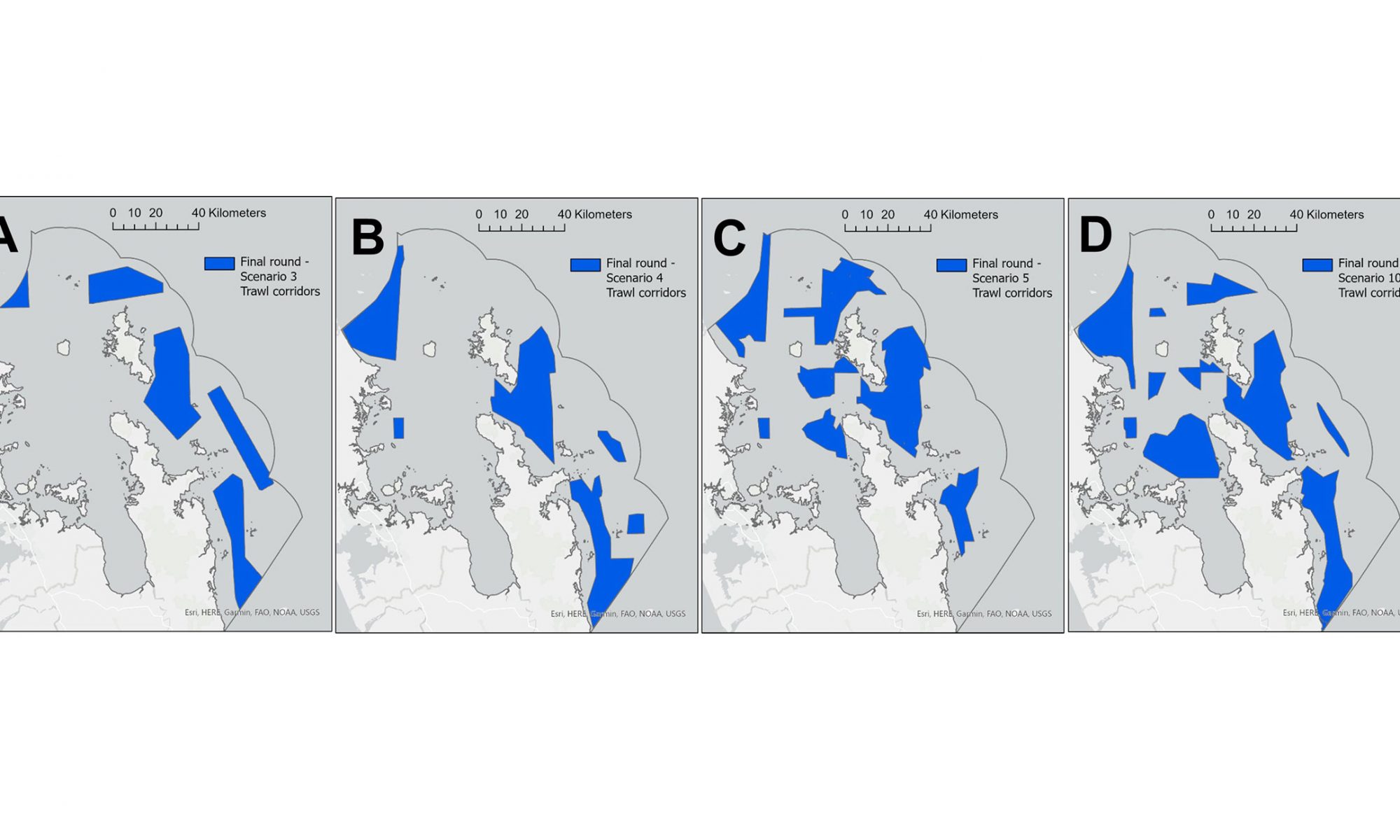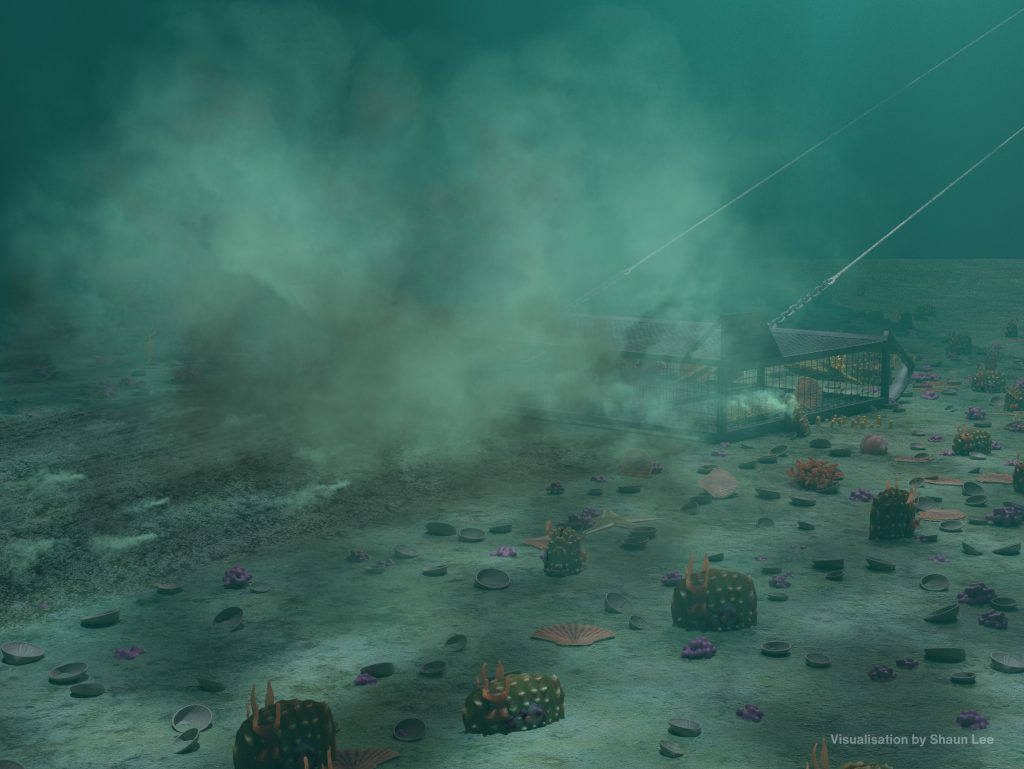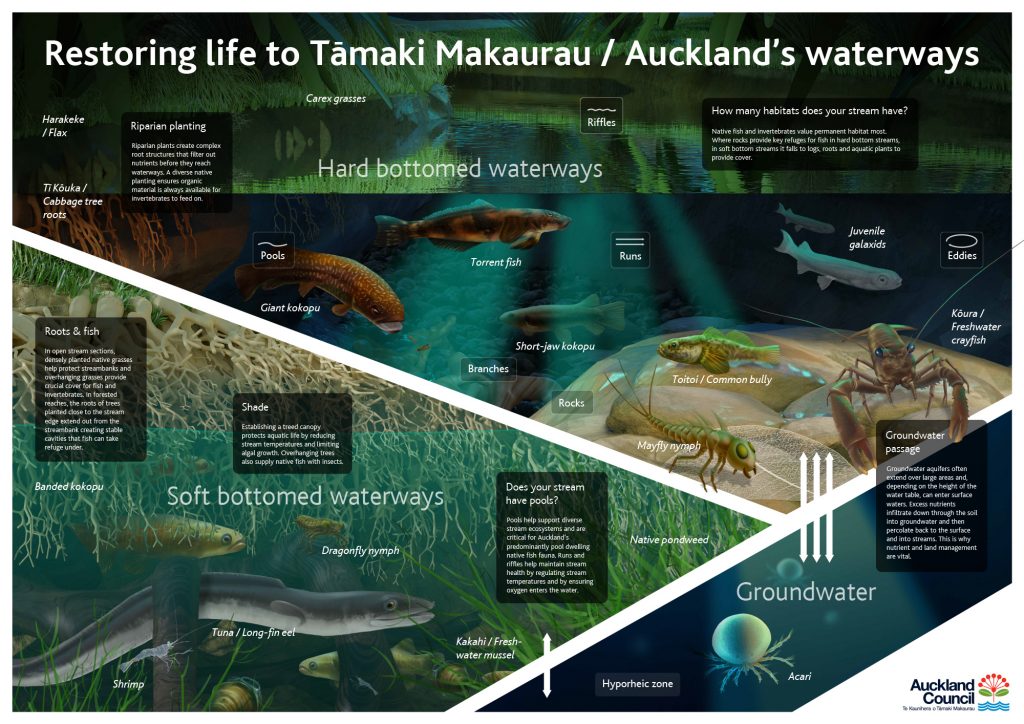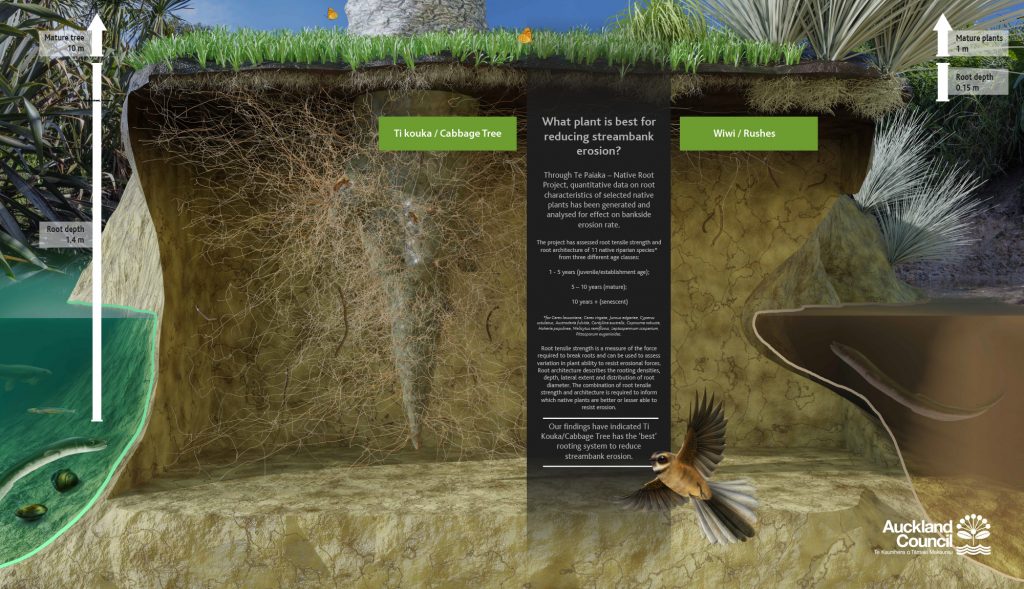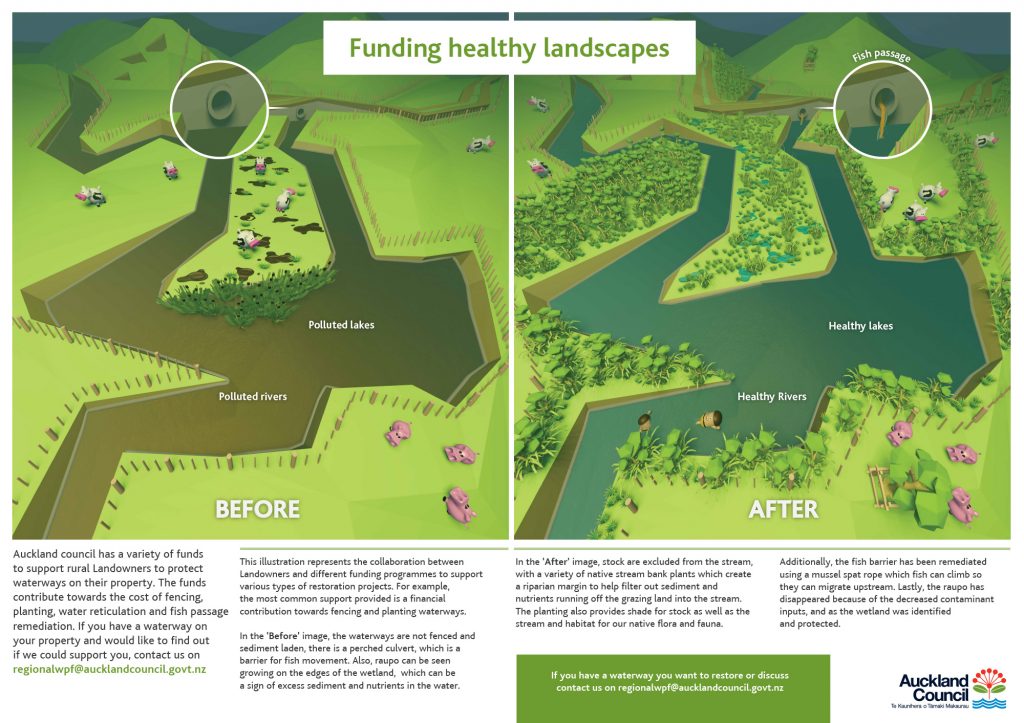Unlike the Sea Change 2017 marine spatial plan that sought to phase out bottom impact fishing from the Hauraki Gulf Marine Park the governments response (Revitalising the Gulf 2021) was to create ‘trawl corridors’. Bottom trawlers do not have a public license to keep smashing the seafloor, a 2021 Horizon Research poll had 84% support for a banning the practice. I love the seafloor and volunteer for an organisation that restores damage done to it by bottom impact fishing. I’m completely opposed to trawling as a fishing method but I put my hand up to help limit its impact in the Gulf using a science based process by joining the Hauraki Gulf – Benthic Spatial Planning Advisory Group (HG-BSPAG).
This was my first experience in a collaborative decision making process run by the Government with industry representatives. I represented an environmental Non-Government Organisation (eNGO), there were three eNGO participants, everyone else was either from NIWA, central & local govt or the fishing industry. The process was chaired and controlled by Fisheries NZ. The other two eNGO participants were awesome and I learnt a lot from them.
I particularly liked the data first approach to marine spatial planning, Zonation is a great tool and I liked the way it starts by removing the human impacts then making an economic case for re-introducing them. Unfortunately some data that would have been useful was not quite complete.
Fisheries NZ controlled the outputs by defining what is in scope. Here is a list of requests that were disregarded:
- Ground truthing the modelling work (out of scope).
- Modelling the distribution of Unwanted Organisms (UOs) . We know from NIWA surveys that trawl nets catch UOs in the HGMP, transporting UOs is an offence under Section 52 of the Biosecurity Act 1993. By excluding UO’s from the study FNZ failed to protect native benthic habitats from UO’s which can be spread by bottom impact fishing (see appendix for more details).
- Infauna (animals that live in the sediments) that are sensitive to bottom impact fishing were excluded from the modelling due to technicalities.
- Mobile species that contribute biogenic habitat like tipa / scallops (see appendix) and burrowing animals like ghost shrimp and crabs were excluded because they were mobile which did not suit their definition of biogenic habitat. This is ridiculous as the smallest grid size is 250m and previously mentioned adult animals are unlikely to move more than 10m.
- Important habitats for fish (like spawning and nursery areas) were not considered (out of scope).
- The indirect effects of bottom impact fishing. Sediment plumes from bottom impact fishing choke and kill filter feeding animals and smother photosynthesising plants. These effects were not included but have been discussed at the end of the report.
- Climate change impacts (e.g. CO2 released from resuspending sediments and heart urchins moving deeper as water warms) also not included but have been discussed at the end of the report.
- Modelling the economic benefits of excluding bottom impact fishing to other fisheries that don’t impact the seafloor, this could have dramatically altered the findings (out of scope).
- Monitoring changes in the money made in an area over time during the transition from one fishing method to another, I think it’s critical this is done with any changes to bottom impact fishing.
- Using the regulations, not existing fishing effort, as the starting point for limiting Danish seining (see appendix on Danish seining regulations). Despite multiple requests FNZ would not even put the existing regulations on the maps.
- Protecting the deeper areas of the HGMP (see appendix).
We did not discuss substrate. Is it better to trawl on sand which emits a smaller plume but may transition to mud with intensified disturbance, or mud which has a larger sediment plume? We know repeated bottom impact fishing alters the chemistry of the seafloor.
The narrow scope of the project was frustrating because there is an aspiration for Ecosystem Based Management of the Hauraki Gulf Marine Park. Once all the environmental effects of bottom trawling and Danish seining are considered, the fishing methods should be banned everywhere.
I have some sympathy for fisheries managers, they have specific deliverables and get pushed around by industry. I did think their approach was often callous, in the face of uncertainty they often chose the status quo rather than taking a more precautionary approach. One member of the Hauraki Gulf Fisheries Management Plan Working Group HG-FMPWG that will finish the corridor design work has publicly criticised the process.
There were no opportunities for feedback on the corridors the scenarios produced. Final trawl corridor design will be Fisheries NZ’s responsibility and will get input from the HG-FMPWG. Other than the above I have no criticisms of the process, it just needs bigger budgets and managers who care more about te taio. I learnt a lot and am happy to volunteer my time again to use scientific modelling in a spatial planning process to protect the environment.
One difficulty I had was proposing trawl corridors. I decided not to volunteer a low impact scenario because the process had already generated a near zero impact scenario which I thought was reasonable (Similar to Figure 14C in the published report – 90% of recovery potential habitat and current trawl footprint & current/proposed protected areas and 100% of current distribution of biogenic habitat (minimising impacts on trawl fishery.) This meant I was left very unhappy with the scale of the proposed scenarios. It was obvious that the scenarios would need work before Fisheries NZ could designate corridors, however I may end up regretting that decision.
I hope Fisheries NZ will monitor recovery (which may take centuries) the data gained could help ground truth this model and develop more robust models in future.
You can read the published report on the design process here: Exploring the use of spatial decision support tools to identify trawl corridors in the Hauraki Gulf Marine Park
Advice for the Hauraki Gulf Fisheries Management Plan Working Group
The outputs of the process will be used by the Hauraki Gulf Fisheries Management Plan Working Group to design bottom trawling corridors in the marine park. Here are some key points they should be aware of:
- Because the process is not ground truthed and does not account for secondary impacts, important habitats for fish or climate change impacts a precautionary approach should be taken. (I suggested massive buffers but they were deemed out of scope).
- Danish seining impacts have not been included in the model. This skews the impacts, recovery in areas where this fishing method is practiced has been understated.
- The corridors should be much deeper (further from the coast) to avoid the illegal transport of Unwanted Organisms.
- Consider the existing Danish regulations as the starting point, not the area where the fishing method is currently practiced.
- Protect the deeper areas of the Gulf because they are included in the Hauraki Gulf Marine Park (see appendix).
- Include monitoring (fisheries method transition) in any recommendations.
- Take special note of the sediment resuspension impacts detailed on page 68 of the report which were excluded from the study.
Appendix
Avoiding tipa / scallop beds
Running heavy trawl gear over tipa / scallop beds is incredibly damaging and foolish behaviour. It not only damages the tipa including juveniles, but also the settlement substrates the tipa use as part of their lifecycle. The Review of Sustainability Measures for New Zealand scallops (SCA 1 & SCA CS) for 2022/23. 3.1.18 states that:
“Within the Hauraki Gulf Marine Park, overlap between trawl activity and scallop beds will be considered as part of the proposal to establish defined ‘trawl corridors’ that will limit the areas where bottom trawling can continue to operate. With the introduction of electronic reporting and Global Position Reporting (GPR) on commercial fishing vessels, Fisheries New Zealand has the ability, through fine scale data, to monitor any notable overlap between fisheries and methods.”
It was frustrating that even though tipa are the most surveyed biogenic habitat in the Gulf the fisheries scientists decided that instead of identifying them they would just model their associated habitats. In the paper they literally say they ‘hope’ that this would mean the beds would be avoided rather than just mapping them out. Only the small beds that remained open at the time of the study (the fishery has since collapsed with bottom impact fishing implicated as a key stressor) were removed from the study area.
The rationale for the exclusion of tipa was that they are very mobile. This is ridiculous given the grid size of the study is 250m. Adult tipa and burrowing animals are unlikely to move more than 10m in their lifetime. For adult tipa mobility see Morrison, M. A. (1999). Population dynamics of the scallop Pecten novaezelandiae in the Hauraki Gulf (Doctoral dissertation, ResearchSpace@ Auckland).
Danish seining regulations
The restrictions prescribed in fisheries regulations for Danish seining define a different area than what is currently applied by Fisheries NZ. The State of our Gulf 2020 quotes Fisheries NZ as ‘committed to reviewing this discrepancy as part of management actions put forward in a fisheries plan for the Hauraki Gulf’. The discrepancy is not recorded in the final report.
Protecting the deeper areas of the HGMP
The deeper areas of the HGMP were excluded from the final scenarios. I asked that they be protected because:
- The edges of continental shelves are biodiversity hots spots. Predicted diversity along the depth incline is one of the reasons for excluding the area from the model.
- This process was designed to protect biodiversity.
- This is the only deep water area in a marine park in New Zealand.
Unwanted organisms discussion document
Here is the discussion document on an unwanted organism (Mediteranean fanworm) I prepared for the working group, similar logic could have been applied to other species including the two recently introduced Caulerpa species.
Omissions
The report details protection measures proposed by Sea Change 2017 but omits the most important benthic protection measure, “the phase out of all bottom trawling, Danish seining and scallop dredging from the Hauraki Gulf, with all such methods excluded by 2025” It’s a strange omission that reads like an attempt to exclude the measure from the history books.









